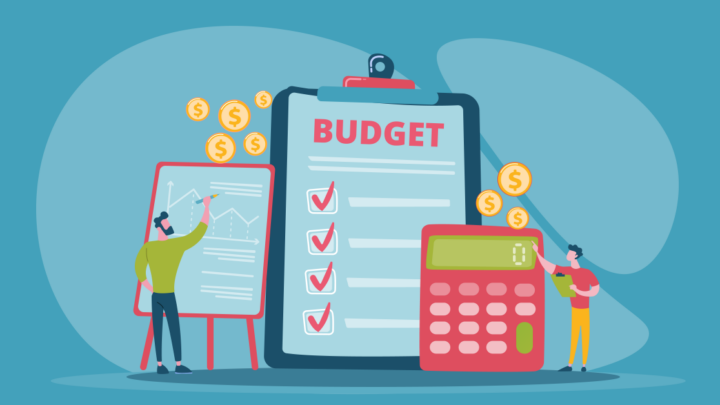How to Make a Monthly Budget
While few people enjoy budgeting, the importance of the task is still maintained. A budget allows you to plan for expenses and provides insight into your spending habits, allowing you to curb overspending more easily.
By creating a monthly budget, you can figure out where your money goes, allowing you to set aside money for your goals, such as retirement savings.
A budget can serve many purposes, including getting out of credit card debt faster, saving for a long-term goal such as a house or retirement, or simply ensuring that you are financially prepared to deal with whatever life throws at you. According to surveys, those who stick to a budget are less likely to report financial worries or live paycheck to paycheck and are more likely to achieve their financial goals.
Many people may feel especially strained in the current high inflation environment when it comes to affording monthly expenses — and trying to save simultaneously. While it will not completely beat inflation, creating a budget will help you get by and relieve some of the stress of anticipating future expenses.
Step 1: Compiling Financial Statements
Gathering all of the records that show your monthly income and expenses, such as those for your bank, credit card, and investment accounts, as well as your pay stubs, benefit statements, and electronic payments, is the most straightforward way to do this.
The accuracy of a budget will determine its strength. Make sure you include all of the categories where you regularly spend money by looking at three months’ worth of credit card and/or debit card charges.
Step 2: Calculate your income after taxes.
If you receive a regular paycheck, the amount you receive is all you need to know. However, suppose you have automatic deductions for 401(k), savings, health, life insurance, or other expenses. In that case, you should add those back in to get a more accurate picture of your income and outgoings. If you have additional sources of income, deduct anything that lowers it, including taxes and company costs.
Step 3: Consider your monetary priorities.
Everyone must pay rent, food, and bills they cannot avoid. Yet, if you don’t attempt to monitor your spending, it’s simple to spend far more than you intend to on unnecessary items. You might discover, for instance, that you often spend hundreds of dollars on takeout or have several monthly subscriptions that you hardly ever use.
Setting up a budget doesn’t mean you have to spend all of your money on necessities. Instead, you should allocate your funds according to your best interests.
Step 4: Design your budget
Create a budget by listing various line items for each spending category. To pay yourself first is a wise move. Savings, whether they are intended for an emergency fund, a new car, a down payment on a home, or other goals, should be one of the first things you include in your budget.
Examine your spending patterns about your priorities. If your real spending already corresponds to your objectives, your budget might be based on your spending patterns. Instead, you should start from scratch with your budget if you want to change your spending patterns radically.
Step 5: Maintain a check on your budget
Monitor your budget regularly to ensure accuracy based on your current spending habits, and update might be needed. Tracking your spending for one month to ensure it matches your projections is a good idea. If you’re having difficulty staying on track, consider using a spending tracker to track your spending over time, providing you with a clearer picture of where your money is regularly going.
Step 6: Try a simple budget plan
The law To make the most of your money, create a 50/30/20 budget. It recommends spending roughly half of your after-tax income on necessities, no more than 30% on wants, and at least 20% on savings and debt repayment.
As prices continue to rise, keeping track of where your money is going is more important than ever. Making a budget is an efficient way to track your spending, better understand your financial habits, and encourage saving.


Recent Comments